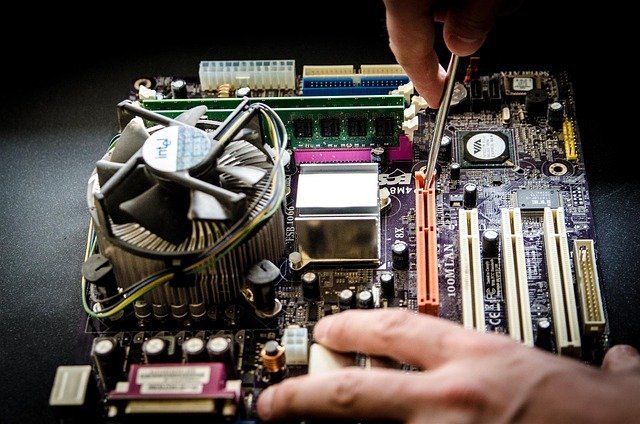Computer Dust: The Silent Performance Killer
The invisible threat lurking inside your expensive hardware might be more damaging than you realize. Computer dust accumulation—a mundane yet persistent issue—affects millions of devices globally, potentially reducing their lifespan by years. From desktop PCs to laptops, game consoles to server farms, no electronic device is immune to this microscopic menace. While many users remain unaware of proper maintenance techniques, the performance impact grows steadily worse over time. Understanding this common problem and its solutions could save you hundreds in repair costs and countless hours of frustration.

The microscopic world inside your computer
Dust isn’t just unsightly—it’s a complex mixture of dead skin cells, textile fibers, pet dander, pollen, and environmental particles that infiltrate your computer through any available opening. Modern computers are designed with airflow in mind, using fans to draw cool air across heat-generating components. Unfortunately, this same airflow system creates a perfect environment for dust collection. Most particles measure between 1-100 micrometers, easily passing through standard intake grilles while being large enough to accumulate on surfaces.
Research indicates that a typical home accumulates about 40 pounds of dust annually. Given that air circulates through computers constantly, it’s no surprise that significant amounts find their way inside your devices. Once settled on internal components, dust forms an insulating layer that traps heat—the natural enemy of electronic performance. The typical gaming PC can accumulate enough dust within six months to begin experiencing temperature increases of 5-10°C above normal operating levels.
The thermal throttling nightmare
When dust builds up inside a computer, it creates a cascade of performance problems that most users mistakenly attribute to software issues. The primary concern is thermal throttling—a protective mechanism where processors automatically reduce their clock speeds to prevent overheating damage. Modern CPUs and GPUs are designed to operate within specific temperature ranges, typically between 60-85°C depending on the model and manufacturer.
A clean system maintains these temperatures through efficient heat dissipation via fans, heatsinks, and sometimes liquid cooling solutions. However, when dust coats these components, heat transfer efficiency plummets. Testing by several hardware analysis groups has shown that a moderately dusty system can experience performance drops of 10-20% during intensive tasks. Severe dust accumulation can reduce performance by up to 30% while increasing component temperatures by 15-20°C.
For gamers and professionals using resource-intensive applications, this translates to noticeable frame rate drops, longer rendering times, and frustratingly sluggish performance. Even worse, the system appears to gradually deteriorate without any clear cause, leading many users to consider premature upgrades or replacements.
The unexpected power consumption spike
While performance degradation may be the most noticeable impact of dust buildup, the increased power consumption represents a hidden cost that accumulates over time. Dusty systems work harder to achieve the same performance levels, drawing more electricity in the process. Fans run at higher RPMs, components operate less efficiently at elevated temperatures, and the entire system consumes more power to overcome these inefficiencies.
Testing conducted with identical systems—one properly maintained and one with six months of natural dust accumulation—revealed power consumption differences ranging from 5-15% during typical workloads. For a gaming PC that might normally consume 500 watts under load, this represents an additional 25-75 watts continuously wasted while the system is active.
Over a year of regular use, this inefficiency could add $20-60 to electricity bills while simultaneously contributing to increased carbon emissions. For data centers and enterprise environments with hundreds or thousands of systems, these costs scale dramatically, potentially adding tens of thousands of dollars in unnecessary energy expenses annually.
The shortened lifespan equation
Perhaps most concerning is how dust accelerates hardware aging and increases failure rates across all components. The relationship between operating temperature and component lifespan follows a well-established principle in electronics: for many components, every 10°C increase in operating temperature reduces lifespan by approximately 50%.
Hard drives running 5-10°C above their optimal temperature range show failure rates increasing by 12-22% according to data center reliability studies. Capacitors on motherboards and power supplies—already common failure points—degrade significantly faster at elevated temperatures, often failing years before their expected lifespan. Even solid-state drives, despite having no moving parts, experience accelerated wear when operating above their rated temperature ranges.
For the average consumer, this translates to replacing components years earlier than necessary. A properly maintained system might function reliably for 7-10 years, while a chronically dusty one might experience component failures within 3-5 years. Given that a mid-range gaming PC costs $800-1500, this premature obsolescence represents a significant hidden cost of poor maintenance.
Breaking the dust cycle
Implementing effective dust management requires understanding both prevention and remediation techniques. For prevention, positioning computers away from floor level (where dust concentrates), installing dust filters on intake fans, and maintaining positive air pressure inside the case can dramatically reduce accumulation rates. Specialized dust filters can capture over 90% of incoming particles while maintaining adequate airflow, with prices ranging from $5-30 depending on case size and filter quality.
When cleaning is necessary, compressed air remains the most accessible option at $5-10 per can. However, electric air dusters priced between $50-100 offer more sustainable long-term solutions. For thorough cleaning, disassembly and careful component cleaning with isopropyl alcohol may be necessary—a process that requires basic technical knowledge but no specialized tools.
Professional cleaning services have emerged to address this maintenance gap, charging $50-150 depending on system complexity. While seemingly expensive, these services often prove economical when considering the extended lifespan and maintained performance they provide. For businesses with multiple systems, implementing regular cleaning schedules can reduce IT maintenance costs by 15-25% annually while extending hardware replacement cycles.
The dust problem persists because it occurs gradually, making it easy to ignore until performance issues become unavoidable. By understanding the hidden costs and implementing regular maintenance, users can preserve their hardware investment while maintaining optimal performance throughout their devices’ natural lifespans.





